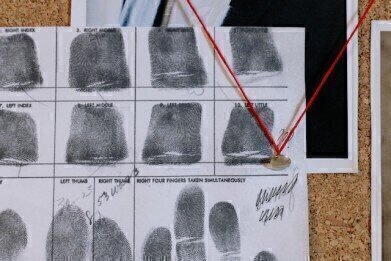Laboratory Products
How Do Biosensors Help with Fingerprint Analysis?
Aug 31 2022
From murders to armed robberies, fingerprints are one of the most useful pieces of evidence available to criminal investigators and forensic scientists. Over the past decade, advances in biosensors have reimagined fingerprint analysis and led to exciting breakthroughs.
Read on to find out more about how biosensor technologies are used to enhance fingerprint analysis and help solve crimes.
What are biosensors?
Before we get stuck into how biosensors help with fingerprint analysis, let’s take a moment to cover what the term means. In an article published in the International Journal of Engineering and Technical Research, the authors define biosensors as “analytical devices to detect biological materials.”
All biosensors require the following:
- A biological component to act as the sensor. For example, a drop of human blood or a strand of hair.
- An electronic component, also known as a probe, to detect and transmit signals and generate useful data.
Advances in microelectronics and biotechnology have seen biosensor probes become increasingly complex over the past decade.
What makes fingerprints unique?
All human fingerprints have a unique set of ridges and lines. This makes fingerprints an incredibly useful and accurate way to identify both victims and criminals. In fact, experts maintain that the chance of individuals sharing the same fingerprints is one in 64 billion.
Combining biosensor technology with fingerprint analysis
Crime scenes are often littered with biological components, including blood, hairs and human serum. New technologies have seen fingerprints join this group of biological components that can be used for biosensor analysis.
Like DNA, human fingerprints are unique to individuals. This makes them a useful way to identify suspects and unknown persons. However, fingerprints aren’t always complete and can often be difficult to read. This is where biosensor analysis steps up. The ultra-sensitive devices can be used to analyse miniscule samples of bodily fluids found in and around fingerprints. Data can be used to generate information on possible gender, age, traces of drugs/medications and other variables.
A non-invasive form of forensic analysis
In an article published in the journal Sensors, the authors explore how non-invasive biosensors have improved forensic fingerprint analysis. “By analysing the content of a print, namely the amino acids, one can gain some understanding of who the donor of that print was and be able to narrow down the search for the investigators,” write the team.
“This is due to the metabolic differences in people due to their gender, age, medications, and lifestyle. By analysing these types of biomarkers in a fingerprint sample, it would not only allow for one to gain much needed information that would provide additional context for investigators, but would also lead to the reduction in the need to wait for the lengthy analysis of DNA that causes a backlog, if any was recovered.”
The use of non-invasive biosensors has helped establish fingerprint analysis as a valuable criminal investigation tool, on par with methods like carbon dating and forensic palynology.
A new era of forensic analysis
Forensic science is multidisciplinary field and fingerprint analysis is just one of many techniques used to solve crimes. Alongside biosensors, we spotlight some of the most exciting new developments in ‘8 Advances in Forensic Science.’
Digital Edition
Lab Asia 31.2 April 2024
April 2024
In This Edition Chromatography Articles - Approaches to troubleshooting an SPE method for the analysis of oligonucleotides (pt i) - High-precision liquid flow processes demand full fluidic c...
View all digital editions
Events
Apr 25 2024 Istanbul, Turkey
Apr 28 2024 Montreal, Quebec, Canada
May 05 2024 Seville, Spain
InformEx Zone at CPhl North America
May 07 2024 Pennsylvania, PA, USA
May 14 2024 Oklahoma City, OK, USA


.jpg)















